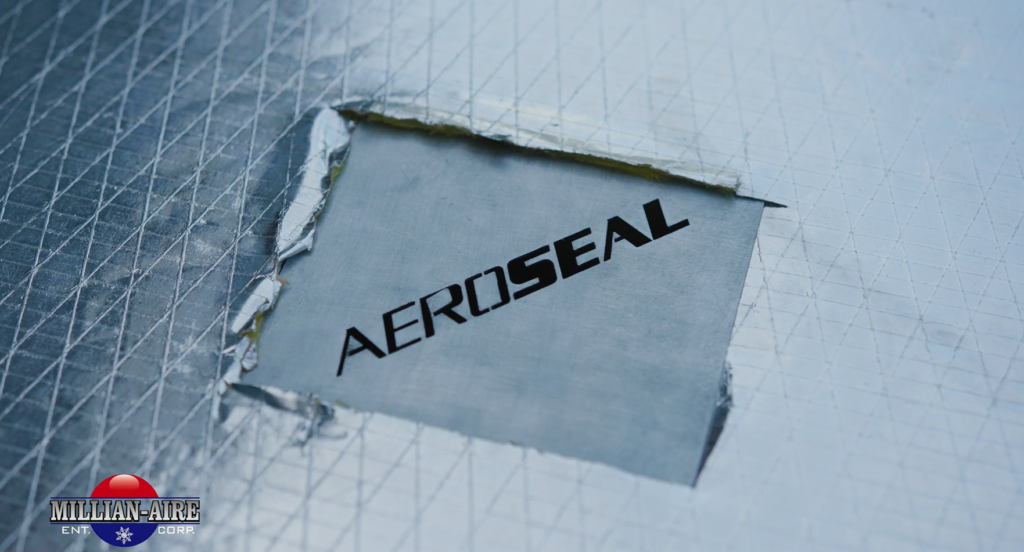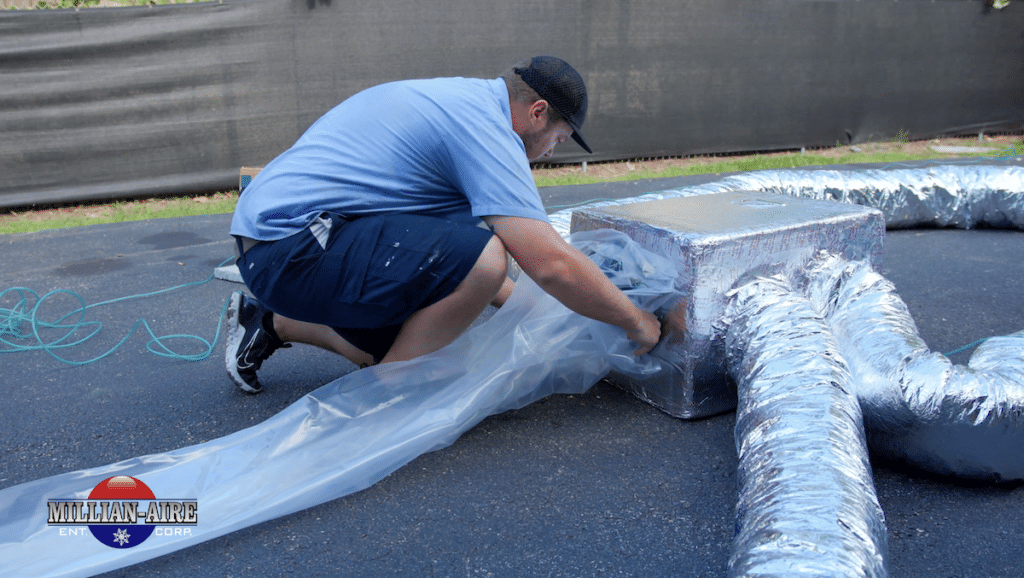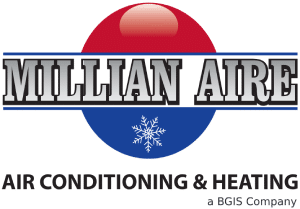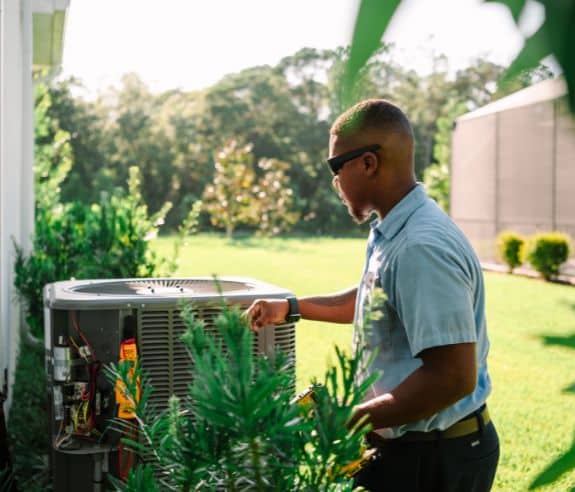When it comes to keeping your home comfortable and energy-efficient, proper duct sealing is often an overlooked but crucial component of your HVAC system. Your ductwork is responsible for distributing conditioned air throughout your home, and leaks can cause significant energy loss, higher utility bills, and uneven indoor temperatures.
In fact, the U.S. Department of Energy estimates that up to 30% of energy used for heating and cooling is lost due to poorly sealed ducts.
Leaky ducts not only waste energy but also force your HVAC system to work harder, which can reduce its lifespan and lead to costly repairs. Poorly sealed ducts can also compromise your indoor air quality by allowing dust, allergens, and pollutants to enter your living spaces.
This article will go into two primary methods of duct sealing—traditional duct sealing vs. Aeroseal. By the end, you’ll have a clear understanding of how each method works, their pros and cons, and which one might be the best fit for your home.

Understanding Traditional Duct Sealing
Traditional duct sealing is a manual process where technicians locate and seal visible leaks in your ductwork using materials like mastic (a sticky paste), foil tape, or insulation. This method has been a go-to solution for decades and is widely used for smaller jobs or accessible duct systems.
Process Overview
- Inspecting Ductwork for Leaks: Technicians visually examine the duct system for holes, gaps, or poorly connected sections. Tools like smoke pencils may also be used to detect air leaks.
- Applying Sealant to Problem Areas: Mastic or foil tape is applied to seal visible cracks and gaps, creating a barrier to prevent air from escaping.
- Wrapping Ducts: In some cases, ducts may be wrapped with insulation to further improve efficiency and reduce energy loss.
Pros of Traditional Duct Sealing
- Cost-Effective: Traditional duct sealing is typically less expensive upfront, making it a good option for minor repairs or smaller duct systems.
- Readily Available Materials: The tools and materials needed are easy to obtain, and many HVAC technicians are skilled in this method.
Cons of Traditional Duct Sealing
- Time-Intensive: Sealing large or complex duct systems can be labor-intensive and time-consuming, especially when ducts are hidden behind walls or ceilings.
- Limited Effectiveness: Traditional methods are less effective at sealing small or hard-to-detect leaks, which can still account for significant energy loss.
- Missed Leaks: Because the process relies on visible inspection, leaks in inaccessible areas often go unnoticed, leaving parts of the system unsealed.
Traditional duct sealing works well for straightforward repairs but may not be sufficient for larger or more intricate duct systems with hidden leaks.
Understanding Aeroseal Duct Sealing
Aeroseal is a cutting-edge duct sealing technology that takes a different approach. Instead of manually applying sealant to visible leaks, Aeroseal uses a pressurized aerosol sealant to locate and seal leaks from the inside of the duct system. This innovative method is particularly effective for sealing small and hidden leaks that traditional methods often miss.
Process Overview
- Pressurizing the Ductwork: The Aeroseal process begins by blocking vents and introducing a pressurized aerosol sealant into the duct system.
- Sealing Particles Adhere to Leaks: As the aerosol moves through the ducts, the particles are drawn to the edges of leaks and gradually build up to form a durable seal.
- Testing for Airtight Results: Once the sealing process is complete, the system is tested to measure the reduction in leakage, ensuring optimal efficiency.
Pros of Aeroseal
- Highly Effective for Hidden Leaks: Aeroseal can seal leaks as small as a fraction of an inch, making it ideal for entire duct systems, including areas that are hard to access.
- Improves System Efficiency: By addressing even the smallest leaks, Aeroseal can significantly enhance HVAC performance, lower energy bills, and reduce wear and tear on the system.
- Boosts Indoor Air Quality: Sealing leaks prevents contaminants like dust, allergens, and pollutants from entering the ductwork and circulating through your home.
Cons of Aeroseal
- Higher Upfront Cost: Aeroseal technology requires specialized equipment and trained professionals, making it more expensive than traditional methods.
- Specialized Expertise Required: Not all HVAC contractors offer Aeroseal services, so it’s essential to work with certified technicians for this process.
Aeroseal offers a high-tech solution for homeowners looking to maximize efficiency and indoor air quality. While it comes with a higher initial cost, its ability to comprehensively seal an entire duct system often makes it worth the investment.

Key Differences Between Traditional Duct Sealing and Aeroseal
When deciding between traditional duct sealing and Aeroseal, understanding their key differences can help homeowners make an informed choice. Here’s how they compare across critical factors:
Effectiveness
- Traditional Duct Sealing: This method is effective for visible and localized leaks. Technicians use mastic or foil tape to patch holes and cracks, making it ideal for smaller systems with accessible ducts. However, its effectiveness diminishes for hidden or microscopic leaks, which are often responsible for the most significant energy loss.
- Aeroseal Duct Sealing: Aeroseal excels in sealing the entire duct system, including small or hidden leaks that traditional methods might miss. Its aerosol technology ensures that all leaks—no matter how small or inaccessible—are sealed, providing a comprehensive solution. Studies show that Aeroseal can reduce duct leakage by up to 90%, leading to measurable improvements in system efficiency and air quality.
Cost
- Traditional Duct Sealing: With lower upfront costs, traditional sealing is a more budget-friendly option, especially for small systems or minor repairs. However, it may require more frequent maintenance as overlooked leaks continue to cause wear and tear. Over time, this can increase long-term costs.
- Aeroseal Duct Sealing: Aeroseal requires a higher initial investment due to its specialized equipment and technology. However, its comprehensive sealing often eliminates the need for repeated maintenance, offering homeowners better long-term value. By improving system efficiency and reducing energy bills, Aeroseal can offset its higher cost over time.
Time and Labor
- Traditional Duct Sealing: Sealing ducts manually is a labor-intensive process, especially for larger or more complex systems. Technicians must inspect each duct section, apply sealants, and test for leaks—a time-consuming task for extensive ductwork.
- Aeroseal Duct Sealing: Aeroseal streamlines the sealing process by addressing the entire duct system at once. Its pressurized aerosol technology can complete the job in a fraction of the time, making it a less labor-intensive and more efficient option.
System Performance
- Traditional Duct Sealing: While it can provide incremental improvements, traditional sealing is limited to the size and location of the leaks it addresses. If hidden leaks are left untouched, the overall performance of the HVAC system may not improve significantly.
- Aeroseal Duct Sealing: Aeroseal delivers measurable enhancements in HVAC performance by ensuring that every leak is sealed. This not only boosts energy efficiency but also improves airflow and indoor air quality, making it an excellent choice for homeowners seeking noticeable results.
Which Is Better for Your Home?
The right choice between traditional duct sealing and Aeroseal depends on your home’s specific needs, the complexity of your duct system, and your budget. If you are looking to seal your ductwork and not have to worry about it for the next 10+ years, then Aeroseal is the answer.
When to Choose Traditional Duct Sealing
- Small Systems with Accessible Ducts: If your ductwork is relatively simple and easy to access, traditional sealing can effectively address visible leaks at a lower cost.
- Budget Constraints: For homeowners prioritizing affordability, traditional sealing is a cost-effective option for smaller repairs or maintenance.
When to Choose Aeroseal
- Extensive or Hidden Leaks: Homes with large or complex duct systems benefit most from Aeroseal’s ability to seal leaks in hard-to-reach areas.
- Maximum Efficiency and Air Quality: If you’re looking to significantly reduce energy bills and improve indoor air quality, Aeroseal’s comprehensive approach is the superior choice.
Consider Hybrid Approaches
In some cases, combining traditional and Aeroseal methods can deliver the best results. For example, technicians might use traditional sealing for visible leaks and follow up with Aeroseal to address hidden ones, ensuring optimal performance.
Aeroseal is only effective with smaller holes and tears in your ductwork. If your ducts have larger holes or tears then they will need to be addressed before Aeroseal can close those gaps. This could depend on the age of your duct system as with time, holes and tears can get larger.
How Millian Aire Can Help: Comprehensive Duct Sealing Solutions
Millian Aire is your trusted partner in ensuring your home’s duct system is sealed effectively, whether you choose traditional duct sealing, Aeroseal, or a hybrid approach. Our team combines expert guidance, certified professionals, and a seamless process to deliver reliable and long-lasting results.
Starting with a thorough inspection of your ductwork, Millian Aire assesses its condition and identifies leaks. Based on their findings, they recommend the best sealing method to improve your system’s efficiency and indoor air quality.
With training and certifications in both traditional and Aeroseal techniques, their technicians ensure the job is done right the first time, no matter the method.
Whether you choose traditional methods, Aeroseal, or a combination of both, properly sealed ducts can significantly improve your home’s energy efficiency, indoor comfort, and air quality. With Millian Aire’s expertise, you can trust that your duct sealing project will be done right, giving you peace of mind and long-lasting results.
If you’re ready to enhance your HVAC system’s performance and lower your energy bills, schedule a duct inspection with Millian Aire today.



